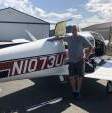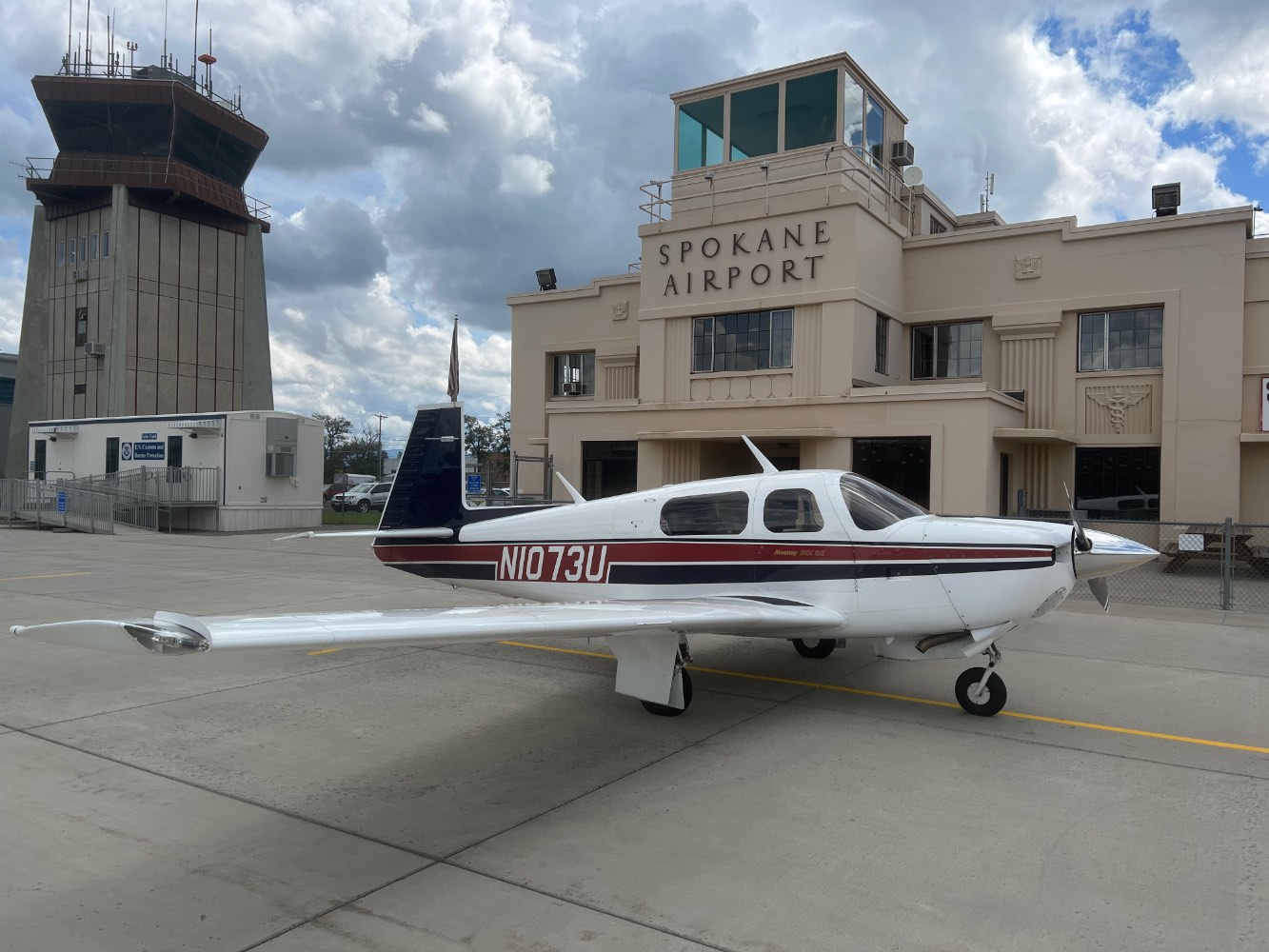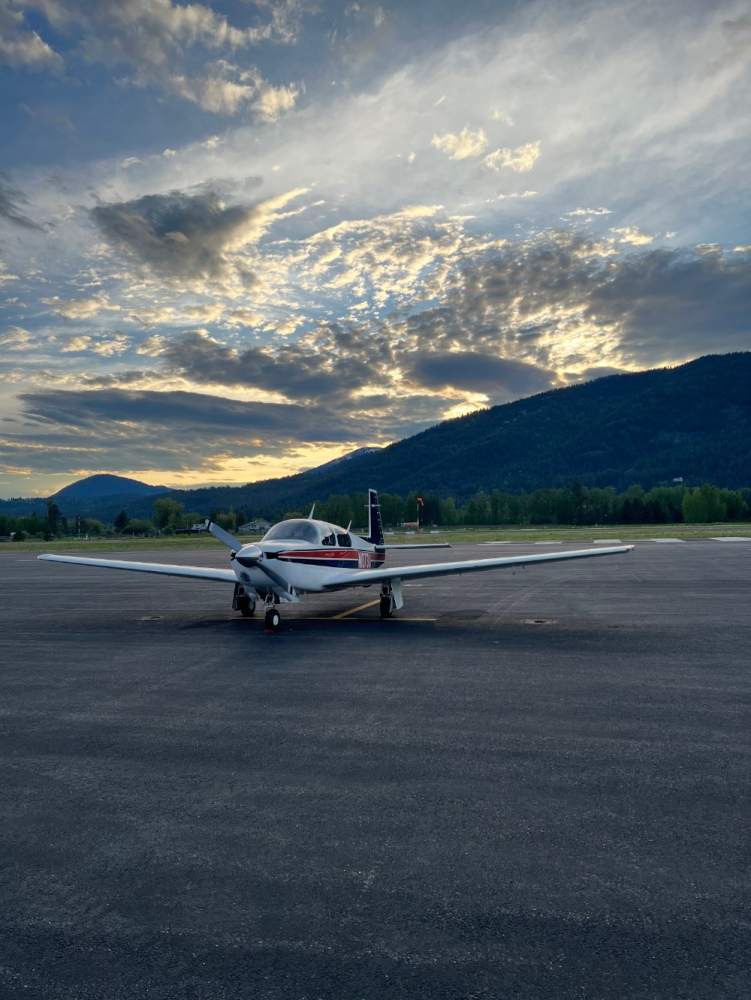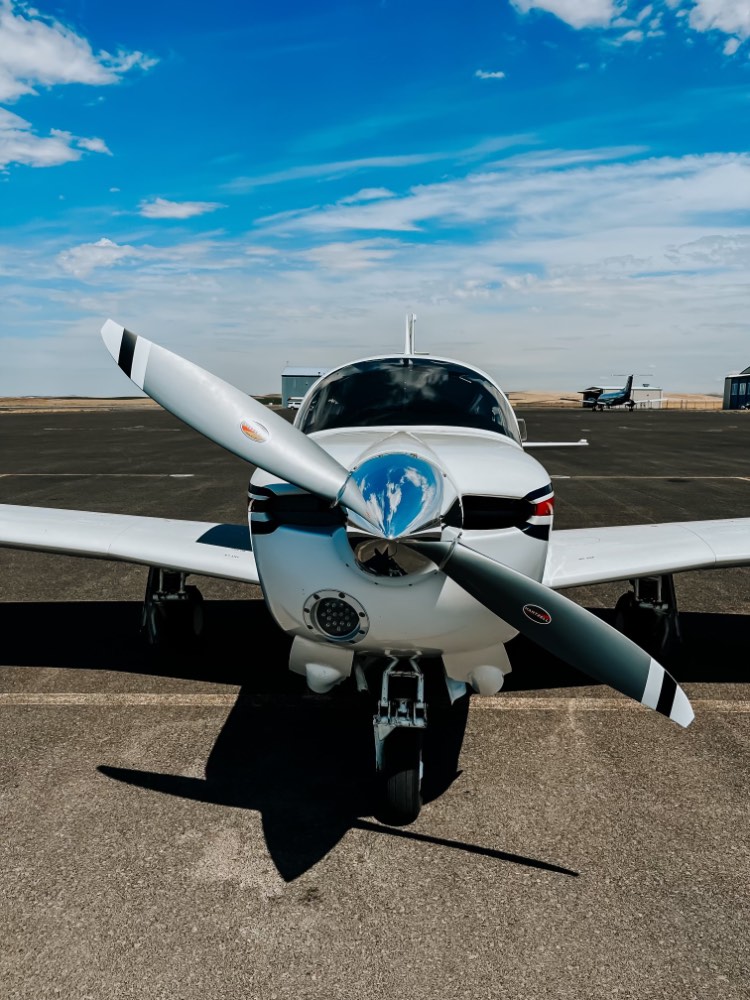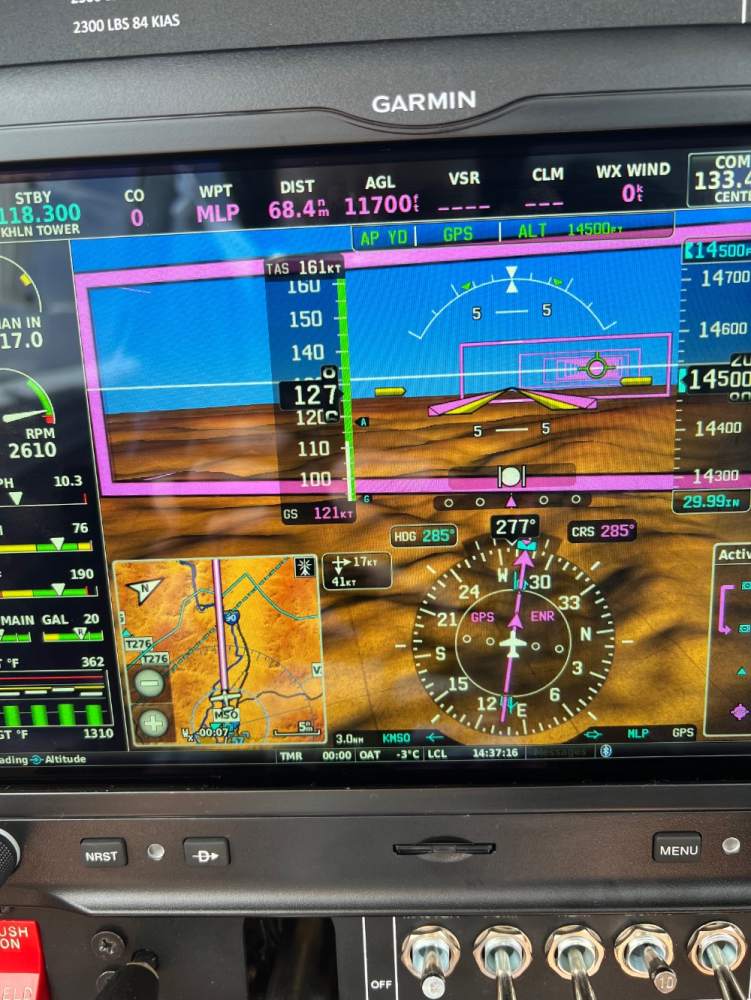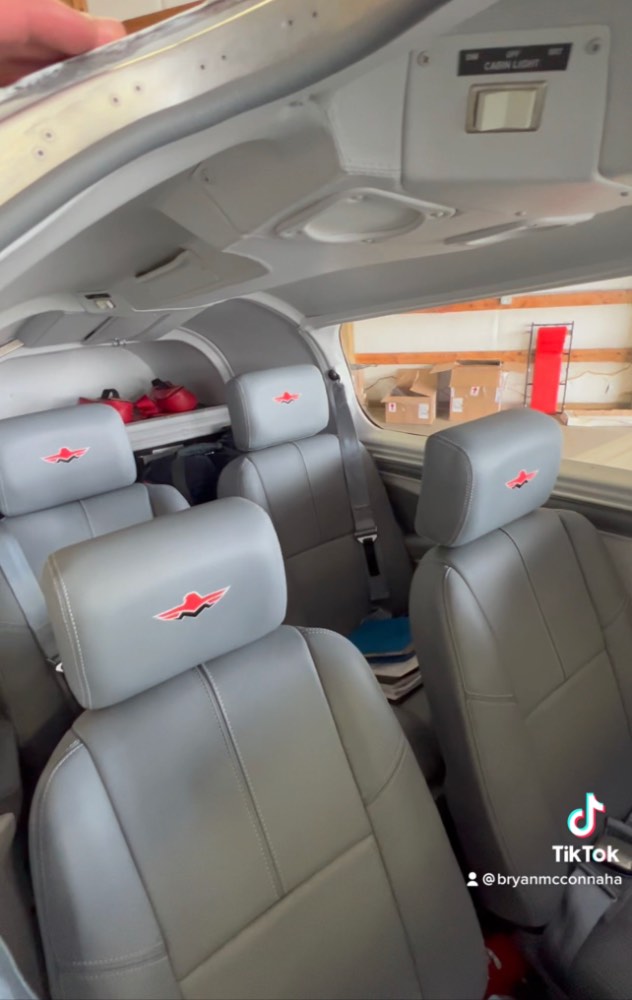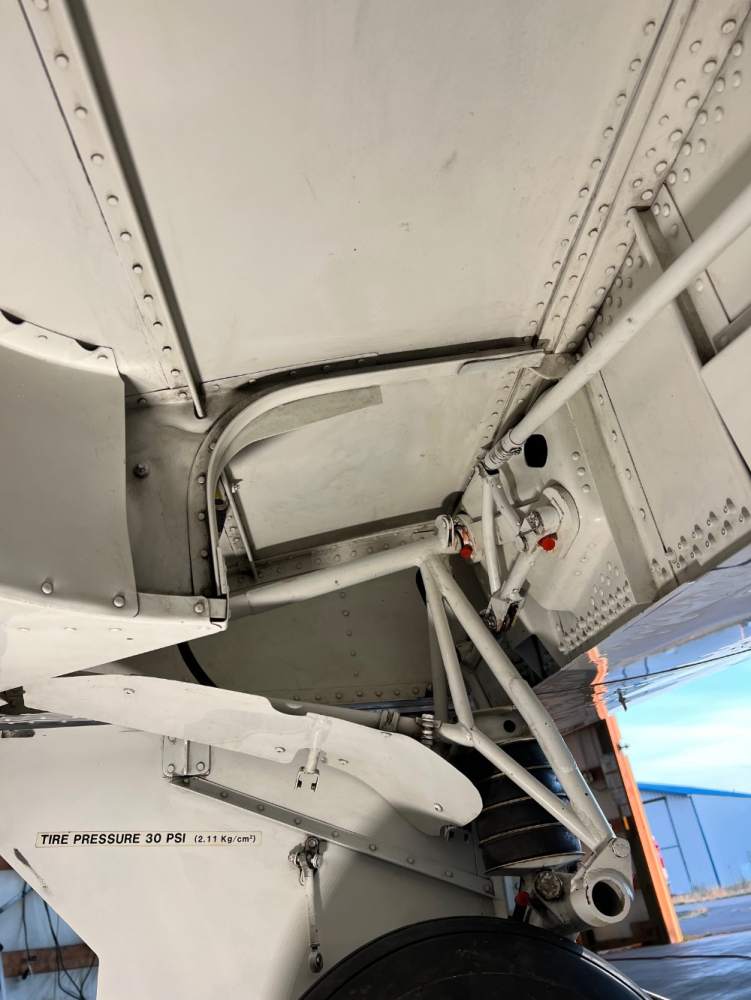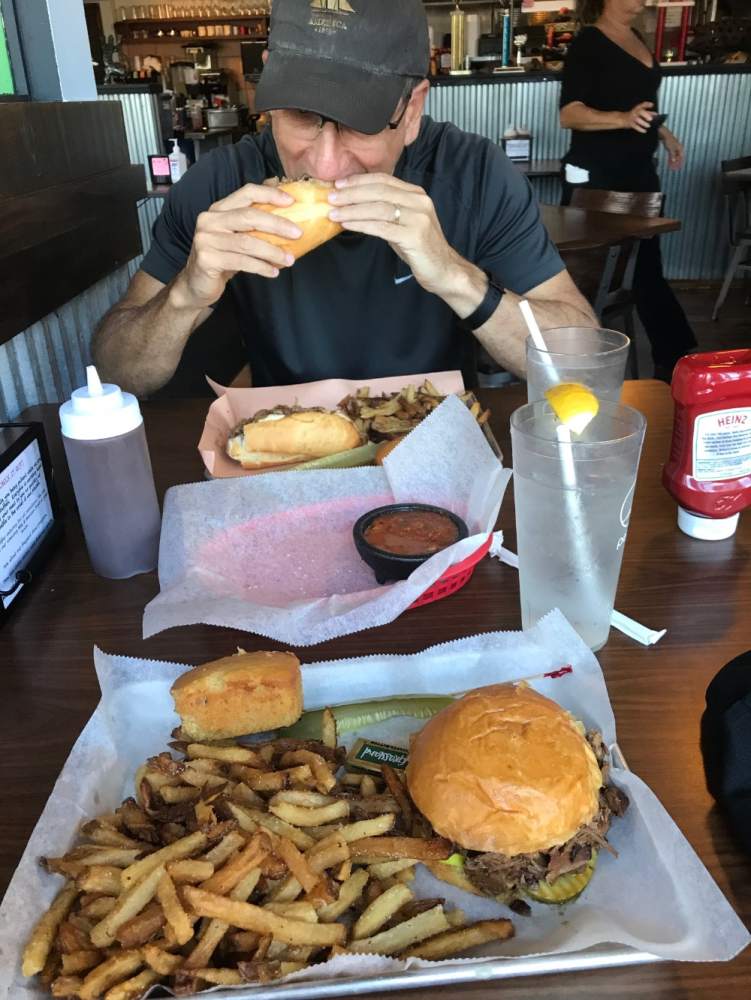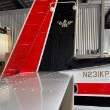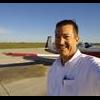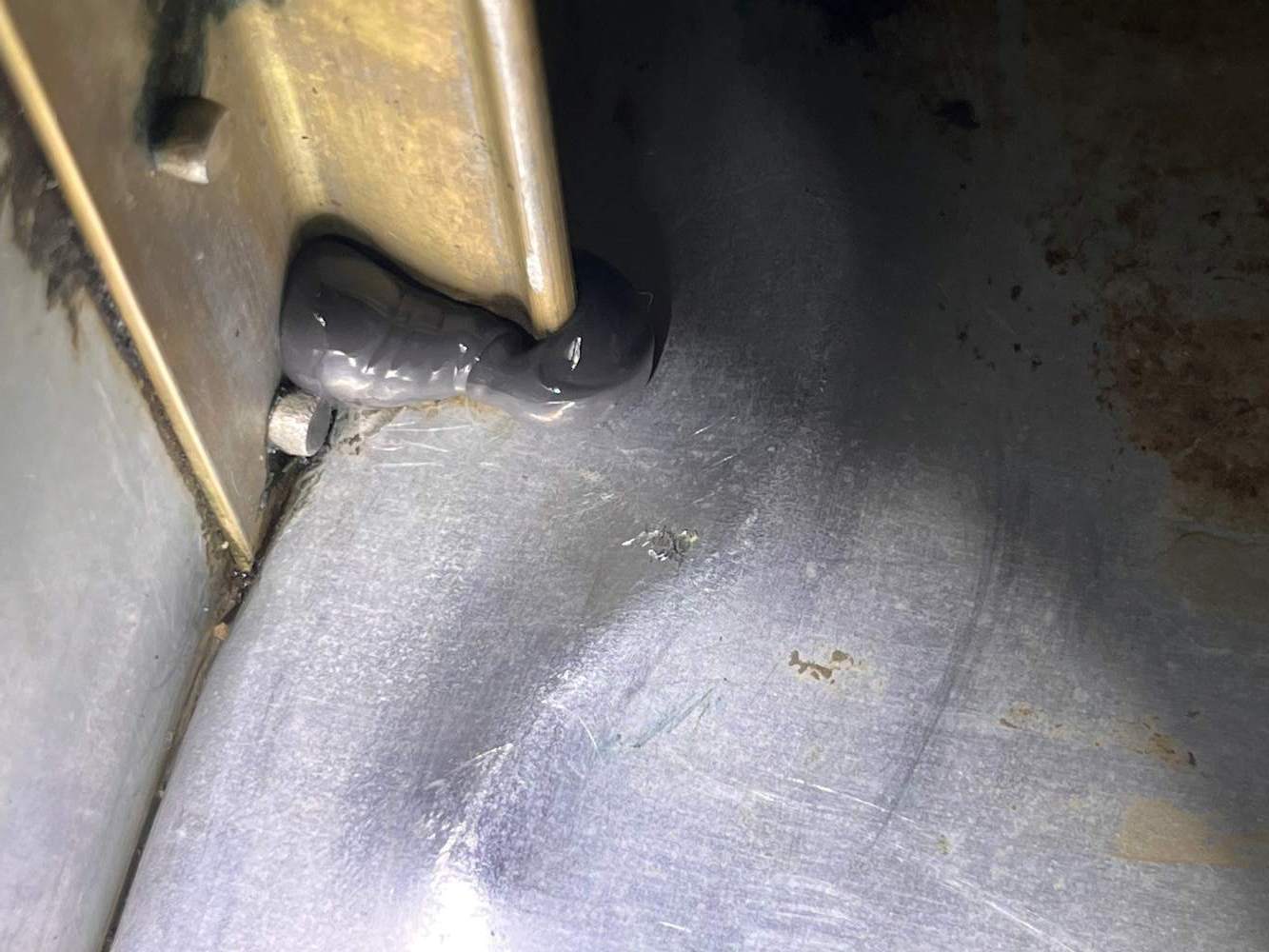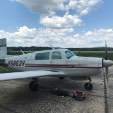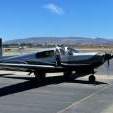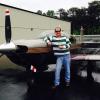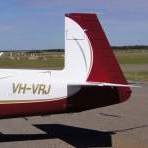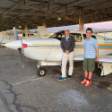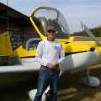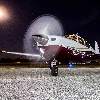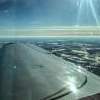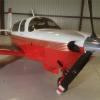Leaderboard
Popular Content
Showing content with the highest reputation on 11/02/2022 in all areas
-
Mission is changing slightly, or maybe should say I refined it a little bit on what I need. I am sure I will regret this, but here she is. It’s been a multi year project, and i think it came out excellent. Yes, its expensive. I have more than asking into it, and most of what I installed was subject to extremely long wait times. No expenses spared on upgrades. 1990 M20J 2155TT. 210 since factory reman (installed in April of last year, has warranty remaining). 210 SNEW Hartzell Top Prop. Annual just completed yesterday. Logs continuous and complete. No Damage history. Asking 289k. Engine: all compressions above 78. Excellent oil analysis. Latest with historical data is attached. Lycoming IO-390. Installed with engine: new powder coated air forms baffles. New Knisley exhaust. Surefly magneto on the left side. Challenger air filter. Reiff TurboXP oil preheat. Hartzell lightweight starter. Plane power alternator. Push button start, switched magnetos via electro air switch. Full engine monitoring via the G3x with all data since engine install logged and avail for review. Brand new tempest finewire plugs Interior: 10/10. one year old. Full executive package from Aero comfort (headliner, side panels, carpet, mats, seats, yokes). 10/10. Glass 7/10 Airframe: paint 7/10. Original. Shows well, has been hangared, but is 30 plus years old. Precise flight electric speed brakes, one year old. Whelen Orion wing tips strobes and navs. Orion strobe/Nav tail light. Whelen G3 landing/taxi light. Wig wag function. Rigging was gone through last year, and flys perfectly. Straight and fast. Goodyear tires less than 1yr old. 2900 Gross weight increase. Over 1k usefull. Panel: dual Garmin 10” G3X touch with engine monitoring and Cies fuel senders. Garmin 750XI. Garmin GFC500 with electric trim and Yaw damper. Garmin remote com (tuned via the G3x). Garmin remote transponder (GTX345R). Sirius XM radio and weather from a GDL52R, displayed on both G3x screens. Landing height system (callouts from 200 AGL down, including a check landing gear annunciation) N1073U-220831.pdf7 points
-
My wife has been supportive, but not enthusiastic, about my learning to fly and buying a plane. Today we flew a trip that is recurring every 90 days and is normally a 7-8 hour round trip by car. It saved us at least 2.5 hours of travel time and everyone got home a lot less fatigued than usual, despite 1/3 of the trip being hand flown in actual IMC. ATC took us down from 10,000 to 5,000 because of military training in the area that put us right on the cloud tops, it's the first time I've seen her pull her phone out to take pictures and video. I think I've finally got her... [emoji16] Sent from my Pixel 6a using Tapatalk7 points
-
Hey! I’m back… Stepped away from the keyboard to go to Mooney Summit… Next thing I knew… I fell behind in the reading… Way behind… All is great! So many new people have joined MS… Thanks to 88V! ( @Eight8Victor ) I got the notification…! Thanks to @201er… we took a short flight in his awesome M20J recently… then Lunch at Grub Hut (near the cheap fuel in NJ, 47N Central Jersey ) If you like meats… Grub Hut is a place to go! About the hat… that is the original America’s Cup yacht… from centuries ago… looks like the hat is about a year or two newer…. The yacht was designed by engineers at Stevens Institute of Technology…. A place that bloomed around the time of steam engines and commercial shipping… and grew wildly during the 1930s and 40s… Holy cow… the French fries…. These are not every day kind of French fries…. Probably need to double the statins in your pre-eating check list… I’m pretty sure the slip layer on the corn bread… can easily clog an artery… Soooo… When visiting NJ… 47N for Grub Hut! It would make a great Mooney fly in location… for those with an Uber or Lyft app loaded…. Thanks to everyone! I’m pretty sure when I see a Mooney on the ramp at any airport… there is a good chance the pilot and I know each other… Let’s go fly! Go MS! Best regards, -a-6 points
-
I have flown quite a few Angel Flights in the last couple of years. I do it for the same reasons I fly - I really enjoy it - and Angel Flight is a way to help others. But someone told mom and today I feel like the kid caught with his hand in the cookie jar, vaguely embarrassed. A few weeks ago I was informed that I need to make my way to Angel Flight Central’s gala on Nov. 18 in Kansas City, there to receive AFC’s 2022 Pilot of the Year Award. Then today I was surprised to receive a call from the CEO of the National Aeronautics Association. At a ceremony that will likely be held at Oshkosh next year, I am to receive the NAAs Distinguished Volunteer Pilot Award. It’s a good thing I was not flying when I got either piece of news, I probably would have put it in the ground. My aircraft, as many of you know, is nothing special. A 231 with an engine now well over TBO, oil leakage from the rocker covers has reached the incurable stage, we are waiting for a new Conti to show up. It is Mooney’s most manual version of a turbocharged piston. And yet I have safely carried well over a hundred patients and their companions, all shapes, types, and sizes, even found a way to cram a collapsible wheelchair, the patient, and patient’s mom into the plane (definitely within W&B), and on occasion, cargo to the weight limit of the aircraft. We need more folks. If I can do it in my lowly 231, you can do it!5 points
-
The Top Gear sequences where James May was being coached by Jackie Stewart and Mika Hakkinen were hilarious. I would totally want Jackie Stewart to be my uncle3 points
-
3 points
-
2 points
-
Well if it’s the power supply i know see why people goto led as a single power supply pack is as much money as the 2 led nav and strobe lights and you are saving 2 pounds to boot.2 points
-
Some things that are interesting…. (I’ve been away…. ) 1) Keeping track or keeping heading… gets more important when there are parallel runways…. Or helicopters are using the opposite traffic pattern… 2) transition to/from the runway… there is one exact speed the Mooney starts and stops flying at… it is dependent on WnB… and can be a range of 10kias wide depending on actual landing or T/O weight… 3) 10kias fast on landing… equals an extra 1k’ of float before touchdown…. 4) For the new guy… forcing the plane to land instead of allowing it to float… is bad… it’s a set-up for the porpoise…. 5) Notes about the porpoise… the nose will bounce three times… First bounce is a hint that your speed was a bit too fast… Go arounds are recommended… Second bounce you know it is time to go around… Go arounds are free…. Third contact is full arrogance… or a real need to be on the ground now… The third bounce is usually where the nose wheel collapses… and close friends start to disown you… while mumbling something about the oncoming insurance cost increases… 6) Note regarding T/O speed… Mooneys don’t depart the ground on their own… staying on the ground beyond Vr… increasingly gets into experimental territory… once you reach flying speed… get away from solid objects… the Mooney pull helps break contact with the ground… not releasing the pull can end in stalling around… Why it is experimental… Mooneys were built to withstand a lot of things… but steering integrity of the three wheeled set-up, gets away with the simple nose gear wear… 7) The eight second ride… is DMax’s description of losing control on the ground… due to this nose gear wear… Often during landing… but, can be equally applicable during T/O… increased speeds while on the ground, increase the strength of the risk. 8) Setting trim for T/O… the white square on the trim indicator… is a hint to where your balance is… forward balance, top of the box… rear balance, bottom of the box… experimenting outside the box? Make sure your stall warning is working really well…. 9) Control forces… sure, some people are stronger than others… and pounds pushing can be easier than pounds pulling… Being out of trim… can be very wearing over a few minutes… When it comes to stuck trim, run away trim, and just being mis-trimmed situations… it helps to know how power and flaps conspire to make control forces really challenging… 10) Take off and landing are so dynamic… If you don’t get it right the first time… chances of getting it right, after a bounce, or other oddity… become less and less… 9) Notes on Go arounds… get practice with a good Mooney instructor… if something gets away from you… it happens incredibly quickly…. While near the ground… Trimmed for landing, with full flaps…. Doesn’t mix very well with full throttle…. Most situations in a Mooney don’t require the full throttle…. So… definitely get the experience of the control forces in the case you find yourself… full flaps, full up trim, and going around…. Or that nose trim ran away a bit before you got it shut off… PP thoughts only, not a CFI…. Best regard, -a-2 points
-
That is one sexy beast! Good luck with the sale.2 points
-
2 points
-
this is exactly why I do most of the work myself, I am lucky to have an AP that I work well with. I am looking to avoid being disappointed in the future. what I learn from other owners / customers will determine whether or not I invest into painting the whole plane or if I do some blending and touch up. aviation paint jobs seem to be so "hit or miss"...2 points
-
Hey Mooneyspacers, Just received a picture of my #4 piston and thought I'd share the backstory. In the last 18 months of owning my 1967 M20F, I've flown just under 400 hours and the entire time have been chasing high oil consumption. I got the plane at a decent price and did a what I thought was a thorough pre-buy, although as a first time owner I definitely know more now than I did last year at this time. The IO-360-A1A had 995 hours on it when I bought it, was last overhauled in 1982, and had two overhauled chromed cylinders put on it five months before I purchased the aircraft, replacing the #1 & #3 cylinders. About six months ago I got tired of chasing messy oil leaks and decided to take the motor off the plane and replace all of the gaskets and seals that we could without splitting the case. Why didn't I just do a major overhaul? I got an incredibly good deal and my thinking was, "well the engine hasn't been overhauled since 1982, it's been in New Mexico all of its life, and replacing everything which is organic and could suffer from dry-rot might get me another 1000 hours out of the motor". At my price, it was only a few bucks per hour of life extension. While I had the cylinders off, we took a good look at the case and cam and everything looked perfect. The thing is, once I got flying again, while the motor was much cleaner than before, my oil consumption was still around 4hrs/qt. I read pretty much every post here, as well as anything else I could find about IO-360's, and I resigned myself to high oil consumption due to the engine having chromed cylinders. In mid-July, I departed Mexico City for Oshkosh and began to notice oil on the gear. Oil consumption was now about 3hrs/qt. By the time I arrived in St. Paul, it was at 2hrs/qt. Before the engine work I had been flying quite a bit at 2hrs/qt and some mechanics I spoke with told me that it was acceptable and that I shouldn't worry too much. Oil consumption stayed steady at 2hrs/qt St. Paul and Regina, SK, and all the way up to northern Saskatchewan. Then, leaving Athabasca Lake for Yellowknife, NWT, I dropped 4 quarts in 2 hours, landed the plane, and called a mechanic. A friendly mobile Quebecois AME (A&P in Canada) spent a couple of days on the plane re-torquing almost everything and fixing things which had broken because of careless re-assembly of the motor/accessories/cowl and we got the plane back to 2hrs/qt. We departed and flew south through Alberta and actually improved consumption to 4hrs/qt over the last couple of flights before arriving home in Victoria the next day. I then started up the plane for a sightseeing flight and noticed the engine running very rough, had a bad feeling and took it into the folks at Victoria Air Maintenance. They found a stuck exhaust valve on cylinder #4, un-stuck-it, I flew it, but oil consumption was horrible and the oil temp and pressure gauges were high and low yellow positions respectively. Knowing I'd have to be flying over water and the Sierras to get back to Mexico City, I decided to have them pull the #2 & #4 cylinders to get overhauled. Just received this picture of the #4 piston and as you can see, the oil control ring is completely embedded into the piston. Will update as things progress.1 point
-
I am pleased to report that, with the assistance and final approval of Rich, AKA N201MKTurbo, who is an A&P, I was able to detect and repair the leak in my left tank using the Mooney maintenance manual procedure. The basic steps were: 1) Drain the fuel from the tank 2) Remove the three fuel tank access panels. 3) Fabricate clear Lexan windows, for the access holes and one for the filler hole. 4) Position flashlights and mirrors inside the tank to enable a view of every nook and cranny and seam. 5) Squirt soap bubble solution along the seams inside the tank near the suspected leak location. 6) Install the Lexan windows with blue painters' masking tape. 7) Insert vacuum hose into a cutout in one of the Lexan panels and look for bubbles where outside air is being sucked through the leak. (I found one significant leak where the stringer passes through the outer tank wall) 8) Make note of the leak location and check the rest of the tank for leaks. (There was just the one leak). 9) Remove Lexan windows and completely remove old sealant from the leak area using MEK and plastic scrapers---no metal scrapers. This took a while. 10) Remove old sealant from the access panels and area inside the wing tank where the panels are mounted. 11) Thoroughly clean the tank with water and cloth that does not shed lint. 11) Using the Mooney Maintenance manual-prescribed sealants, I filled the leak area with filet sealant, brushable sealant and top coat. 12) Reinstall the access panels with panel sealant and new aircraft grade screws. 13) Fill both tanks with fuel and fly! 14) No leaking observed and depleted fuel is consistent with expected fuel burn rate. Thanks to EricJ for an early discussion and examination of the plane right after I noticed a leak, and thanks to Rich for guidance and encouragement throughout the repair project as well as assistance re-installing the access panels, which is easier with three hands. I had a great time working on the plane and it was one of those projects that I almost didn't want to end. "Almost" being the operative ;-) I am glad to be flying the plane again!1 point
-
Ok, I found Waldo but wondering where @carusoam has been? Can anybody confirm that he is ok?1 point
-
If you're a luddite and still have one of those flip phones with a camera, those are a reasonable alternative I managed to get some serial #'s off some instruments with a standard smartphone, but it's pretty tight behind the right panel1 point
-
I spoke to an Avemco representative and he quoted me as an LLC owner Hull and Liability, I'm thinking the previous agent had a misunderstanding.1 point
-
Mario-- I should also ay that Saavy (Mike Busch's company) manages my airplane as well. I used to Lean on Climb out, but they quickly corrected me on this as well. The whole game is about keeping the cylinders cool in that situation so I was told to climb with everything fire-walled until I reach my target altitude. That does in fact keep things cool, but burns a lot of fuel to do it. Others may have a different experiences. Further, I have about a .2GPH Gami Spread and I worked hard to get that with GAMI. The tuned injectors that come stock in the engine do pretty well, but I was looking for best operation LOP and you need a tight GAMI spread to get that IMHO.1 point
-
Back in the day…. Newport, RI (about 150nms NE of NYC) was the center of the yacht sailing racing world… All of the corporate giants had a summer home in Newport… and Bar Harbor, ME…. Tons of dough were spent getting a tenth of a knot faster… What we see on the surface… huge, purpose built, boats… and dozens of highly trained / experienced sailors…. what doesn’t often get seen… is all of the businesses that support the sport… Hiding the technical details of each boat was a technical challenge… each time the boat was out of the water… the teams were putting up tarps to keep viewers away…. Winged keels were all the rage! Today’s boats… are hydrofoils… their wings are always exposed…. As the upwind wing is taken out of the water while sailing… soooo much engineering, technology, and material science being employed… The tradition of sailing and corporate giants Re-ignites every now and then… Oracle’s Larry Ellison always used a boat as part of his advertising campaign…. Probably a nice tax dodge, making his sailing a business expense…. Today’s billionaires… are more likely building rockets… instead of owning a newspaper company, they buy social media companies… a big corporate logo proudly displayed on each ‘ship’. Sailing gets more interesting every day! Best regards, -a-1 point
-
It’s almost all staged. Clarkson has joked about the irony of being notified that Top Gear was to receive an Emmy nomination for “- Non-Scripted Entertainment” while he was writing the script. The sunken car was totally scripted. The tunnel crash was likely a scripted incident that went badly, but made for good content. Obviously there have been real accidents. I think the “Every man” persona of these guys diminishes the perception that they are not only highly skilled drivers but true adrenaline junkies. NFW a “normal” 45 year old wants to be a wing walker for a day. They don’t need the money nor the content, so I have to assume there’s a level of enjoyment beyond just making good TV. You should spend a few hours on a track with a 75 year old instructor in the right seat making you feel like a bag of molasses…it puts things in perspective. Humans certainly deteriorate physically, by how much varies quite a bit from individual to individual. This sort of thing is easy to witness in musicians. John McLaughlin for example probably isn’t as fast at 80 as he was at 35. Yet even as an octogenarian his technical abilities are jaw-dropping by any measure.1 point
-
1 point
-
1 point
-
They are sort of clowns that take risk and we all watch with glee and horror. That is part of their sell. But now they are old men and their reactions are slow and I just cringe. I would sooner they not take those risks and just be silly and show us cool cars. In that same episode they broke a car through lake ice and then saved it with a cool trick with logs. That seemed kind of staged though since they had all the equipment ready to start saving it. Otherwise I would say that was very risky too.1 point
-
Matías, It looks like you are trying to make as many friends as possible…. I read Lance’s input, and I see the many points he is covering… If you want to call it ‘nonsense’ in an open forum… That may slow your progress…. Working with M20Ls is as challenging as it gets… The M20L is the first Long Body…. And it is different from the second Long Body, M20M… on both sides of the firewall… Trying to find somebody that has a copy of the paperwork you are seeking… Is a giant networking exercise… Being nice to everyone will always help! Of course… you can skip the niceties… and go directly to the FAA and look up copies of STCs… It’s the first step on a long walk… MS is on the internet… but it isn’t the internet…. Best regards, -a-1 point
-
I have a M20K 231. I have been playing with landing configuration such as landing with 2/3 flaps and such to improve my landings (it doesn't help that my day job is flying an Airbus A350, a little different sight picture)! When does everyone reduce the power to idle on a normal landing (no extreme winds or crazy conditions)? I want to pull power over the airport boundary, but the sink rate increase makes me very uncomfortable. I tend to pull the power just prior to the numbers but I feel like I have too much energy in the flare even though I get the stall warning prior to touchdown. I rarely bounce and feel like touchdown is at a fairly high elevator defection. It's just the short delay between main and nose gear touchdown that gets my attention. I am a low time Mooney pilot and did get a checkout prior to flying the airplane. It seems like the more I fly it the worse my landings are. I just want to be safe and thus consulting you Mooney EXPERTS. BTW, I am not totally unexperienced as I am a CFII, MEI, ATP with about 15,000 hrs of flight time. As I say, I'm only a little smarter than the next guy because I admit my limitations. Thanks everyone. The support on this forum is awesome and I am proud to be part of the Mooney community.1 point
-
Notwithstanding ATC runway heading instructions, a rule of thumb I was taught in regard to crosswind takeoffs is to set the heading bug left or right into the wind at half the wind strength value. After lift off, fly the bugged heading until ready to turn. It should as best as possible keep you aligned with the runway with minimal drift. For example, take off runway 36 with a 10 knot crosswind from the left then set heading bug to 355 or if it’s a 20 knot crosswind then set heading bug to 350. The same concept applies for right crosswinds.1 point
-
It is perhaps more likely to be the power supply than the bulb assembly. The usual approach these days is to just replace the whole system with LEDs.1 point
-
The risk on that particular stunt in the tunnel was very high because there was essentially very little margin and no escape paths. I don't know what went wrong, but it didn't take much. Hammond basically hasn't participated in any of the risky stunts for a while, and I suspect (and hope) that maybe that'll extend to the others now.1 point
-
She slept most of the trip, both ways. I take it as a compliment. Sent from my Pixel 6a using Tapatalk1 point
-
1 point
-
1 point
-
1 point
-
At the risk of sounding stupid, did you check the inflation pressure? The wheel might look right when standing still, but be somewhat underinflated - just enough to flex in a weird way upon touchdown.1 point
-
Demonstrated a bunch of pretty real world numbers in this example: At today's gas prices, makes an even bigger difference. For example 1000nm trip with $8/gallon fuel: 145ktas@8.5gph vs 155ktas@10.0gph 0 wind: $469 in 6.9 hours or $520 in 6.5 hours, $51 to save 0.4 hours 50 knot headwind: $714 in 10.5 hours or $760 in 9.5 hours, $46 to save 1.0 hours The stronger the headwind, the lower the premium to save some time by going faster (from a modest to begin with cruise speed). It's an effective fuel cost of $127.5 to save an hour to go 10 knots faster in zero wind or $46 to save an hour to go 10 knots faster in 50 knot headwind. Moral of the story is, it's ok to get impatient and go faster when facing stiff headwinds, you won't be paying as much to go faster as in still air.1 point
-
You’re asking for something that does not exist. Mod works in Punta Gorda Florida back in like the late 90s had some STC to do this, but the hurricane hit the facility and since the owner had no hangup keepers insurance he was faced with hurl of lawsuits and claims, he fled for Alaska. That was 20 years ago.1 point
-
It took me a number of years of teaching to realize how important slope was in the landing process. Before I got my CFI and began teaching I didn't place enough emphasis on it. Over time the epiphany came to light that the rate of descent and rate of pitch up in the flare worked so smoothly at the 3° slope. Most people just wing it on final without placing attention on it. Putting your attention on it as part of the landing process is a good start. Most of my transition training students hadn't ever put any attention on it. I'd say it takes between 10 and 15 landings with an instructor or someone who recognizes the sight picture of the 3° slope and calls it out to you, before it gets imprinted in your head. It's a lot easier with a PAPI or VASI, but even with those aids there's room for error because those aids guide you down to the VASI or PAPI position and not the runway threshold. A really cheap way to get the sight picture is to play my landing video over and over again. It's only $25. After costs (Disks, DVD case, Disk Label material, Mailer, and Mailing costs), I barely break even on it, so it is more of a service than a profit making endeavor. https://donkaye.com/landing-video1 point
-
When taking off, the plane should not "skitter or dance" on the ground before liftoff. Use what Bob Krommer calls "The Mooney Pull", about a 5 pound control pressure pull in the yoke as speed is gained on the takeoff roll. The plane will fly itself off when it is ready to fly without "skittering and dancing". Regarding "It dawned on me....", you're talking apples and oranges. When taking off you have much more airflow over the wing due to full power. When landing you are at idle power, less airflow over the wing. Don't try to compare takeoff performance with landing performance.1 point
-
I think with retirement coming next year I better stay put! If you ever want to scope out our area PM me for my information and you are welcome to come stay with my wife and I while you explore for a place to live. We bought our place with a view to be helpful to others. Blessings, Torrey1 point
-
I'm not Don, but we have both drunk from the same well, and believe the data. Turbo cool-down is also a myth. The APS crew instrumented a turbo many, many years ago to demonstrate this. Literally put a thermocouple on the turbo itself! The coolest the turbo ever was after takeoff was at the point of touchdown, and every second after the wheels hit the runway it got warmer. Sitting at a parking spot idling for any length of time just made it get hotter. Don't do it. The physics make sense... after a prolonged descent (lower power setting, extra airflow through the cowl) the turbo reaches a minimum temperature. Then dramatically reduce the cooling airflow while rolling out and especially idling and it has to get warmer. Don also mentioned his angle of attack system... I'm a huge fan of the Alpha Systems kit and installed one on my J. (Maybe even before Don!) It is simple, intuitive, and extremely helpful. It is my primary instrument for final approach airspeed control now, and I have it mounted on the forward part of my glareshield so it is always in view when landing. No more mental gymnastics to calculate landing weight, no more "+5 knots for safety" or similar. It works. My landings got more consistent after using it. Yes, you can land perfectly fine without it, but you should be adjusting your airspeed to match your landing weight for the best results. If you always land at the same weight, that's easy, but carrying butts in the back and variable fuel or bags make a big difference!1 point
-
I was based in DFW from like 1993-1997 flying for Wings West - American Eagle and again from 1998 - 2000 flying the MD88 Mad Dog for Delta. I had a crash pad in Hurst near Bell Helicopter. We had a blast but many of our adventures cannot be disclosed on a public forum. I said I would NEVER return to Texas but being a California native and seeing how this state is progressing, a migration east is not out of the question. Come on over to Delta. You can teach me some Airbus stuff. I was on the 757/767 for 18 out my 25 years here so the transition to the Airbus A350 has been a serious test of my cognitive abilities to say the least. Take care, Steve1 point
-
As discussed in the APS Course, shock cooling is basically a myth. Think of it this way: The coolest you will usually find a cylinder is around 250°F. The hottest should be around 350°F. That's 100°F difference. Both Lycoming and Continental say the maximum cooling rate of a cylinder per minute is 50°F. So, even in the worst case that is only 2 minutes. It is difficult to get my fastest cooling cylinder to do 50° per minute. So, for efficiency, if I'm coming over the East Bay Hills in a descent, I'll enter the pattern at 160-170 knots. I know the rate of slow down to prevent the fastest cooling cylinder from doing 50° per minute. Hitting the speed brakes will immediately slow the plane to the 140 knot gear speed, after which time the gear is extended around 135 knots. The plane will then rapidly slow to flap speed of 110 knots. I'll be on base at that time. The flaps are fully extended, and the 80 knot base speed is nailed. Then quickly set up on final at the blue donut speed indicated on the Heads Up Display of Eagle AOA. This is usually about 5 knots less than that speed "guessed" without the AOA. Maintain the 3° slope to about 5 feet AGL. Smoothly reduce power to idle while beginning the flare at such a rate that you end up touching down about 8° nose up, stall horn going off, and still able to see at least 2 center lined stripes down the runway.1 point
-
Sorry, but it makes me cringe every time I hear the term "chop the power". It's much more difficult to properly control descent rate when power is "chopped". It's a good way to have inconsistent landings. Nothing in flying non aerobatics needs to be done rapidly. If it does, then the judgement error was made earlier (commonly known as being behind the airplane). Flying is a graceful endeavor, and control should be made smoothly. That's what differentiates most private pilots from the ATP. I like to keep it simple. For the K model 90 knots on downwind with gear down and approach flaps. When you hit the 3° slope point as relates to your aim point, first reduce power to about 14", simultaneously hold up trim while adding full flaps, and turn base never letting the nose drop below 3°. To prevent bad things happening with a runaway trim, flaps move faster than the trim. Trim for hands off. The drag of the flaps will slow the plane to 80 knots if the nose maintains the 3° slope with the runway. Once on final, reduce speed to no less than 70 knots nominally. Maintain speed accurately with pitch and use power to control the descent rate. Maintain the 3° slope all the way to about 5 feet altitude from the aim point which should always be fixed in the windshield. Too often I see people not recognize what 3° looks like, let the slope decay to 2° or less and then end up dragging the airplane in with power for a sometimes smooth, but what I consider a lousy landing. It takes practice to control the rate of flare with rate of descent to be able to touch down at the desired point with idle power and the stall warning horn activated.1 point
-
Currently at nearby airports about 15 min flight away, Hollister, Watsonville or Livermore. When UL100 gets distribution worked out I expect KRHV to be one of the first using it. Hoping that is sooner than later.1 point
-
They did send him some correspondence back in '08, but probably not the kind that you're envisioning... http://www.generalaviationawards.com/2008-national-ga-awards-winners-named/1 point
-
I thought we weren't allowed to ask that anymore. Well, I don't actually know what kind of radiation is emitted from CT machines, but my team designed infrared and Ghz-wave incabin monitoring systems. We had ISO standards for instantaneous and cumulative exposures and we made sure that the exposure levels were well below those. I don't want to think that they made and sold tons of CT machines without nailing that first. My pet peeve is about the "1-2$ cost adder" because I find it to be the generic left-wing approach of "making small sacrifices for the greater good." Putting up with unnecessary TSA screening, phone tapping, limitations on your freedoms, because one believes that one will achieve safety by making a tiny sacrifice. Pay your dues and you will be redeemed. Well, I believe that same safety can be achieved without requesting further sacrifices. Gas prices are already well above the norm. Take the lead out. I am all for that. But don't ask me to spend more "because I, the filthy-rich capitalist plane owner, can afford it". Unless, you want to apply punitive taxation on all other luxury items, such as golfing, boating, designer clothing, vacation traveling, etc. and by the time you're done, anything except for basic staples will be on the "punitive taxation" list. That's what happens in Europe with 20+% VAT.1 point
-
I have an Alpha systems AOA, Valkyrie heads up display so it's always in my field of view when i want it. I can fold it down during cruise flight so not in the way. Excellent purchase. Making sure my final airspeed is in the blue donut, my landing distances have dramatically reduced without having to guess for weight. Base to final speeds above stall (BTW, using my AOA, i've learned that these change on really warm days by the way, which I personally wouldnt be able to calculate with an airspeed indicator alone). Takeoffs, very easy to figure Vy, or Vx if i need it. Right now im having a stall switch adjustment issue, but with the AOA display and audible alerts, don't absolutely need one. The alerts are also very helpful if you are doing many things, like climbing, turning, listening to ATC, watching all of your engine gauges and if you start to go a bit slow, well above stall, it will let you know, which ive found helpful in high altitude climbs over 14k or on warmer days. Another thing I love about my AOA, although I have never actually used it in an engine out emergency, you can know exactly what speed configuration to fly for best glide again without having to guess. So absolutely i would buy it again.1 point


